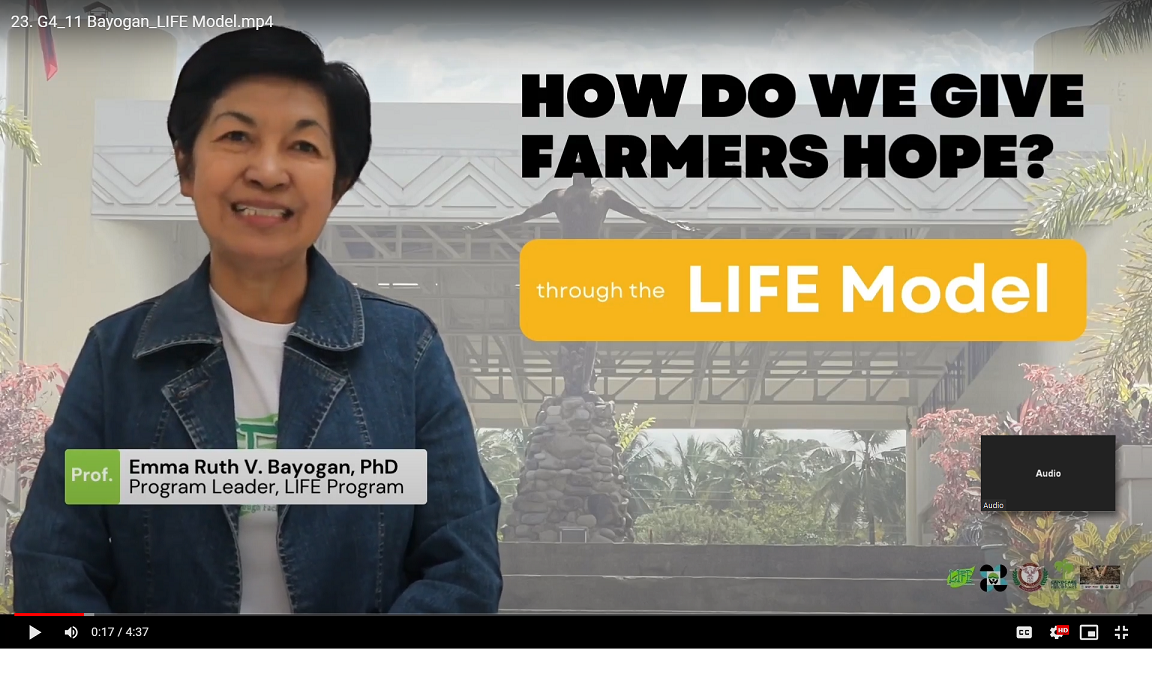Farmers incomes increase with LIFE model, 2022

Farmers in conflict-vulnerable areas in Mindanao experienced increased incomes after the University of the Philippines Mindanao (UPMin), along with partners Landcare Foundation of the Philippines (LFPI) and ACIAR Mindanao Agricultural Extension Project (AMAEP), implemented the Livelihood Improvement through Facilitated Extension (LIFE) model, an alternative agricultural extension delivery strategy, from December 2017 to April 2021. The program had the support of the Philippine Council for Agriculture and Natural Resources Research and Development of the Department of Science and Technology(PCAARRD-DOST).
“Incomes increased from 31% to 89%, and their vegetable gardens and other livelihoods provided a steady source of income,” said UPMin professor Emma Ruth Bayogan, program leader of the “Enhancing Livelihood Opportunities in Conflict-Vulnerable Area in Mindanao through the Livelihood Improvement through Facilitated Extension (LIFE) Model,” at the 7th National Research & Development Conference organized by the DOST on September 15 to 16, 2022, at the PICC Complex.
“They are now able to give their children allowances for school and have aspirations for them attending college,” she said.
In South Cotabato province, the project sites are Sitio Lambukon in Barangay Canahay and Sitio Blakang in Barangay Talahik, both in the municipality of Surallah.
In Maguindanao province, the sites are Sitio Bisang, Barangay Talisawa in Datu Abdullah Sangki Municipality, and Barangay Tomicor in Ampatuan Municipality.
In Zamboanga Sibugay province, the sites are Sitio Katipunan in Barangay Magdaup and Sitio Mangga in Barangay Buluan, both in Ipil Municipality.
“We used to plant vegetables for our kitchen. Now we can sell them,” said Josie Manambat of the Teduray farmers association. “Our cucumbers earned more than 1000 pesos, our string beans sold for 600 pesos, and okra for P300. Before, we waited for three months to earn from our corn crop, and now we can earn income daily,” she said.
Sitio Katipunan cluster leader Ayna Lisab said, “We have never harvested anything worth P30,000 previously because prices were so low. Now more buyers from Zamboanga and other places buy our produce.” As a result, she said, they were able to pay off their motorcycle loan and improve their house.
The Livelihood Improvement through Facilitated Extension was first used in 2013 by the AMAEP Project. The LIFE model focuses on partnerships and working together, learning by farmers so they can help others later, developing trust and social capital, respecting cultural values, and being facilitators of change instead of leaders of change.
The LIFE model relies on local facilitators who know the culture and language and thus develop rapport with the community. Farmers choose their desired livelihood training, learn to engage with representatives of institutions to access technologies and services, and build social capital. The use of the model is advantageous, with a benefit-cost ratio of 1.45:1
The farmers were trained in vegetable and seaweed farming. They also received training in tilapia growing, seaweed farming, basket weaving, raising livestock, financial literacy, and organizational development.
“Besides the time of extension workers sent to the areas and new infrastructure, other partner agencies contributed more than 2.5 million pesos over the program period,” said Prof. Bayogan.
As a result, all six groups of farmers were organized and empowered, and members improved their livelihoods. Moreover, UP Min assisted in crafting three local ordinances that were passed. Also, 17 agreements were forged.
“Extension workers in conflict-vulnerable communities can adopt the LIFE model to enhance their livelihoods,” she said.